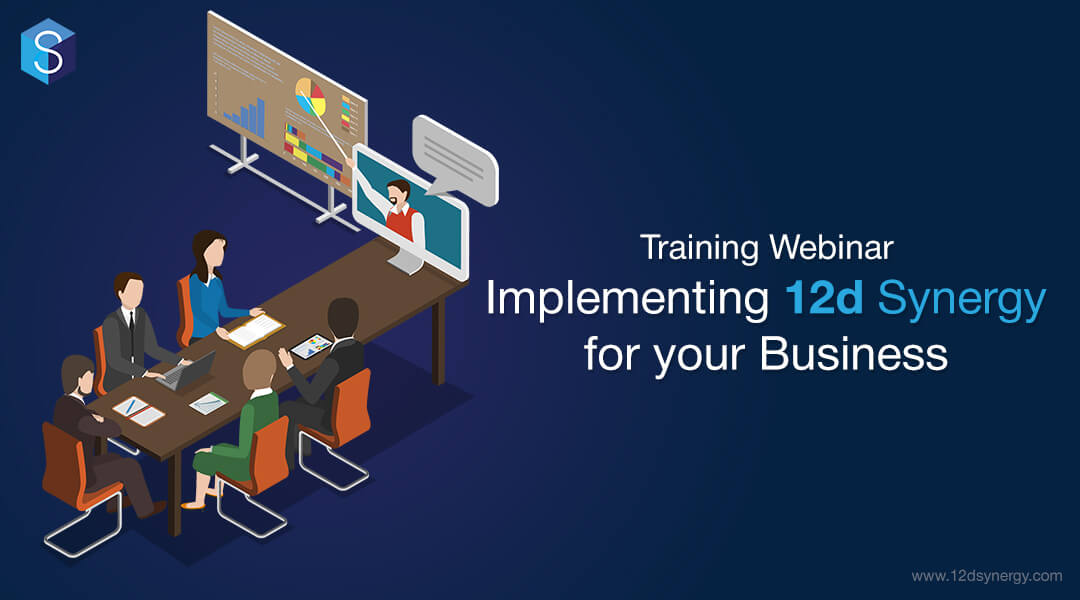Implementing 12d Synergy for your Business

How to Speed Up the Implementation Process
Implementing 12d Synergy at your organisation is a sizeable change. One that is likely to encounter obstacles. To help you overcome this, Lincoln Smith and Tim Brooks presented a 12d Training webinar to show you how to successfully and seamlessly implement change at your organisation. And how to do so in a way where everybody wins.
First, Lincoln discussed reasons why people become resistant to change. He then recommended strategies on how to overcome these barriers. Tim then provided some helpful recommended processes to successfully and swiftly configure 12d Synergy.
The webinar has been recorded and is viewable below ????
Watch: Implementing 12d Synergy for your Business – Training Webinar Series
Overcoming resistance to change
Ultimately, the key to successfully overcoming change is to have a thorough implementation plan that is informed by your research. Don’t just blindly run into the change- if you do, it’s likely you are going to fall over.
So, what does this implementation process look like for me? Well below is a general plan which most clients follow.
 Communication is also key. Messages must be two-way; just telling someone of the change is not good enough and will trigger people to become active resistors. Instead, start a two-way dialogue with your colleagues; listen to their feedback, their worries and their problems. And then act upon them.
Communication is also key. Messages must be two-way; just telling someone of the change is not good enough and will trigger people to become active resistors. Instead, start a two-way dialogue with your colleagues; listen to their feedback, their worries and their problems. And then act upon them.
Best practices during your 12d Synergy configuration
We highly recommend configuring 12d Synergy with the guidance of our expert trainers. Doing so will allow you to get the most optimal setup that suites the unique needs of your organisation. It’s best to perform the configuration of your system soon after your training so that 12d Synergy is still fresh in your mind. Setting a date for your configuration is also very important. Otherwise you can get so caught up in the day-to-day stuff that before you know it a month or two has passed and you are still not using 12d Synergy. Its just sitting there on your server. But you aren’t using it. Worse still all your users have forgotten their training…and you’re back to square one.
Step 1: Access to your system
We begin configuration by walking you through how to give users access to the system and how to assign them a license. You will also need to set what type of user they will be and their login type. If they need to have a different module, such as Advanced Data Management, this is where you upgrade their access.

Step 2: Establish an overall layout to your Synergy system
The focus here is to create your standard folder structure that perfectly suites your organisations needs and practices. As well as how to add external contacts and if required how to link them to a company. We have a look at your needs and build your optimal job tree to suite your business.

Step 3: Permission sets and Roles
Setting up permission sets and group roles to determine what files and folders certain users can access, view and edit. This allows you to restrict access to sensitive files. Team roles are great for fast-tracking the assignment of tasks and workflows as they can be given out on a group basis, rather than for each individual. Adding your required folders structure to suit. The easiest way to apply permissions is via setting up the permission sets. This makes it easier than choosing the types of permissions for every job and folder. We also explain to you what undefined, allowed and denied permissions are. Permissions can be applied in every job and folder if they are required to be different.

Step 4: System settings
After deciding upon your permission sets and group roles, your next step is to configure your system settings to suite the workflows and practices of your company. The settings are very easy to set up, however, you will need to understand what the settings can do for you. Your 12d trainer will be happy to talk you through what each setting is and how it will affect you. The system settings can be used to set up active Checkout rules, automatic history comments, task types and other general settings.

Step 5: Attributes
The last step in a 12d configuration is setting up your attributes. Attributes are used to add additional information. Attributes can be given to your jobs, folders and file attributes. We also show you how to use Attributes to automatically fill out documents.
Interested to learn more about 12d Synergy?
Book an obligation free demonstration today.

Author